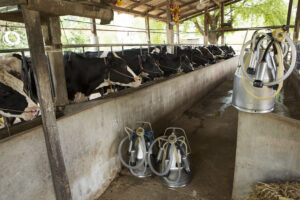
Contaminated water or feed may have caused dairy cows to become infected with the H5N1 avian influenza virus.
Recently, Texas officials issued a health alert about the first confirmed case of a human infection with a bird influenza virus that has found its ways into dairy cows.
The U.S. Department of Agriculture (USDA) says it has confirmed that the virus has infected cattle at farms in Texas, Kansas, New Mexico, and Michigan, while Idaho has a “presumptive” outbreak at one dairy farm.
The USDA stressed that the “current risk to the public remains low.” Contamination of commercial milk is of “no concern,” the agency said in a statement, because pasteurization reliably kills viruses, and milk from sick cows is not being sold. The Centers for Disease Control and Prevention (CDC) says people should not drink raw milk or products like cheese that are made from it. [source]
Recommendations for Clinicians
Providers should consider the possibility of avian influenza A(H5N1) virus infection in people who have symptoms of influenza and relevant exposure history. This includes people who have had close contact with a person with suspected or confirmed avian influenza A(H5N1) infection, affected animals, or unpasteurized milk from dairy farms with suspected avian influenza A(H5N1). A close contact is defined as a person who is within 6 feet of a confirmed or probable avian influenza A(H5N1) case for a prolonged period of time, or who had direct contact with infectious secretions while the case was likely to be infectious (beginning 1 day prior to illness onset and continuing until the resolution of illness).
Symptoms of avian influenza A(H5N1) infection in humans may include:
- Fever (temperature of 100°F [37.8°C] or greater) or feeling feverish or chills
- Cough
- Sore throat
- Runny or stuffy nose
- Headaches
- Fatigue
- Eye redness (conjunctivitis)
- Difficulty breathing/shortness of breath
- Diarrhea
- Nausea
- Vomiting
- Seizures
